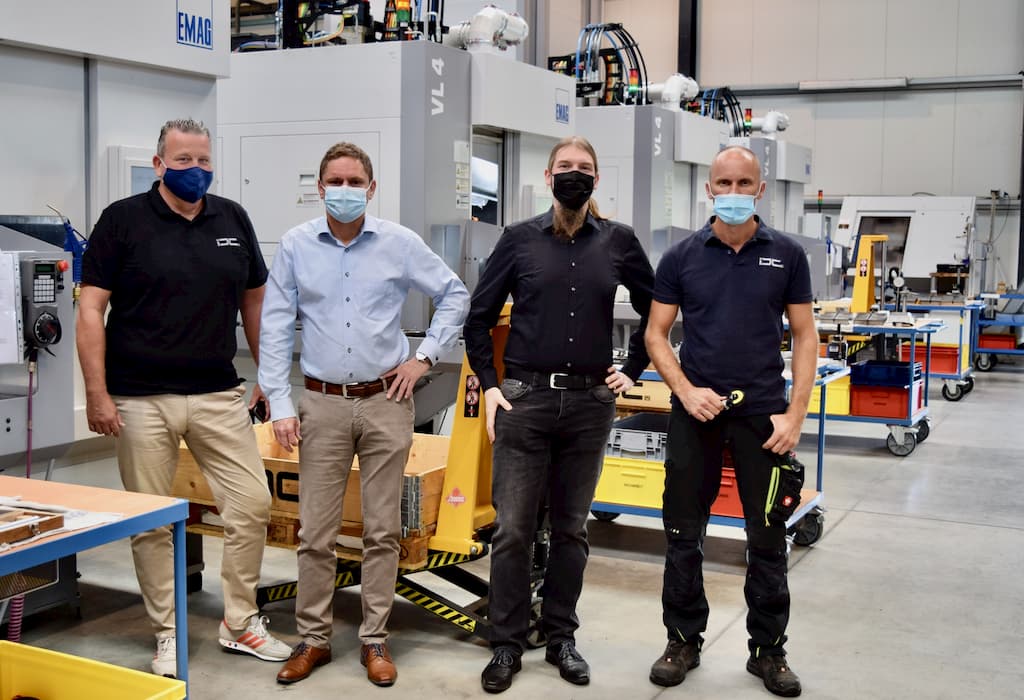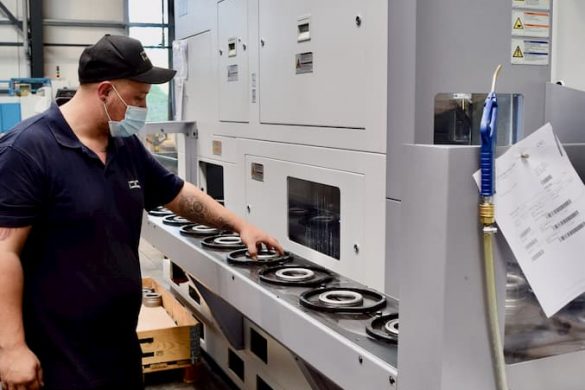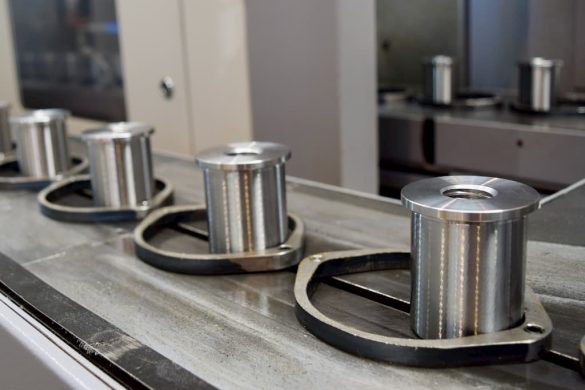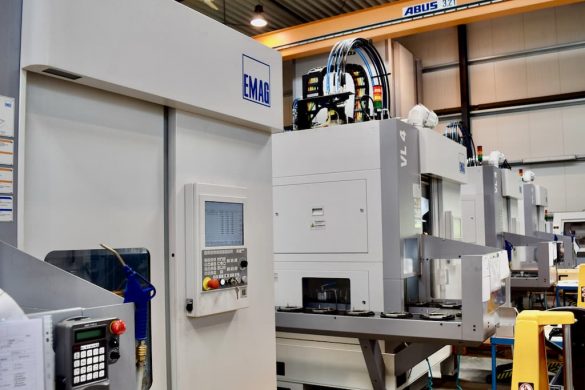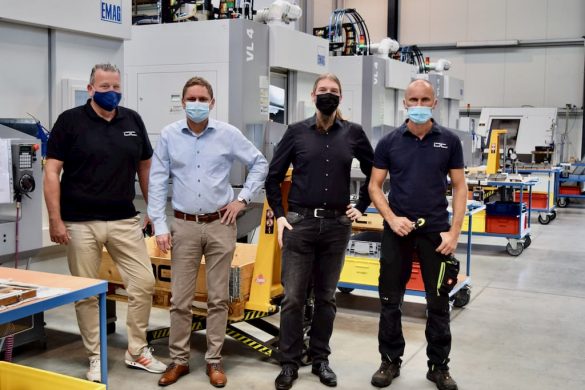Interprecise Donath GmbH, based near Fürth, Germany, develops and produces rolling bearings that are used in a variety of machines and gears – an extremely precise task that involves just a few micrometers and requires special surface qualities. For about three years, VL vertical lathes from EMAG have been used for this machining, achieving lower unit costs in the soft and hard machining of many components. We sat down for a conversation with Interprecise Managing Director, Christian Witte, about the market challenges and advantages of pick-up technology.
Mr. Witte, what makes Interprecise Donath GmbH stand out and how would you describe your market?
First of all, you need to know that we serve a niche in the roller bearing market. We only produce small to medium (from 1 – 2,000) batch sizes. Another thing to note is that this is a special, high-precision sector of the industry, only a few micrometers decide the quality of a bearing, which is decisive for the central movements of a machine or a gear. With these barriers, unmanned series production is almost never possible, because we measure and check finished parts multiple times. Nevertheless, we also need efficient production solutions that allow us to hold our own in a highly competitive market.
How did you come to the decision to invest in EMAG pick-up technology?
Since our foundation in 1980, we have constantly been growing, and with the establishment of our “iDC” brand in 2007 the growth has been even faster. A crucial factor in our success has always been our ability to react quickly and flexibly to every inquiry. Let me put it this way: if others are still thinking about the offer, we already have the technical drawing ready. This speed is only possible if all employees pull together and are masters of their job. This is the case with us, if you call us with a technical question you are guaranteed to speak with a rolling bearing expert. However, in recent years we have also reached the limits of our capacity because of the number of orders, with component variation increasing significantly. We reacted to this by investing in our EMAG machines in 2017.
What tipped the scales for this solution?
Easy, the pick-up technology – this partial automation solution fits our requirements and processes perfectly. The complete system allows us to increase productivity, even with smaller quantities, because one operator can easily supervise several machines or load the circulating conveyor belts. Ultimately, this means that we can produce more with the same number of employees, allowing us to cut unit costs by about 15 percent. There machines can also be changed over quickly with their easily accessible workareas. This is another major selling point because we process up to 50 different components are four VL machines, meaning they have to be quickly reset up to three times per week.
Your operators previously only used horizontal machines, how did they accept the vertical turning technology?
Of course some operators were a little skeptical at first because they didn’t know the technology, but that was not a big problem. As soon as they saw the stability of the process the skeptics were quickly convinced of its benefit, as you can see from our continued investment in EMAG technology. We received our first two VL 4’s in the summer of 2017, and production started six weeks after delivery. One year later and we have invested in another VL 4 and a VL 6 for our slightly larger components. All machines are still running smoothly today.
How is the quality of the parts that are produced?
It has been very positive! The measuring station between the workarea and pick-up station plays a very important role in this. Depending on the result of the measurements, the machine will readjust itself automatically, correcting any tool wear and ensuring repeat accuracy in the production of bearing rings. We also benefit from the rigidity of the machine design, and the pick-up approach, which guarantees the positioning of the part during the work process, preventing errors.
What are your plans for the next few years?
We hope to continue to grow, and I see good opportunities for this because rolling bearings are indispensable in many areas of application. Many industries such as aerospace, logistics, robotics, the printing industry and the packaging industry have machines that use our technology. Rolling bearings can even be found in the motion elements of sonar panels or in agricultural machinery. They are usually mounted on shafts or axles and are used for guidance or load transmission – and with very low friction, which reduces the energy consumption of the drive. With this diversity and these advantages, we are not reliant on the economic development of single industry. However, we also face some strong competition – making intelligent production solutions such as EMAG’s vertical pick-up lathes indispensable.
